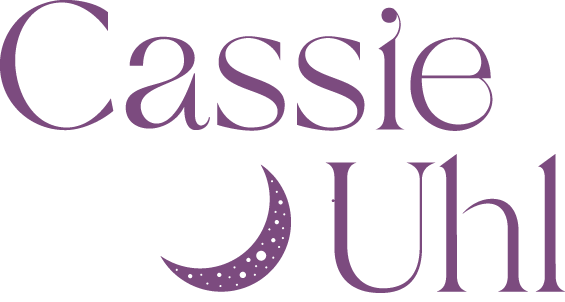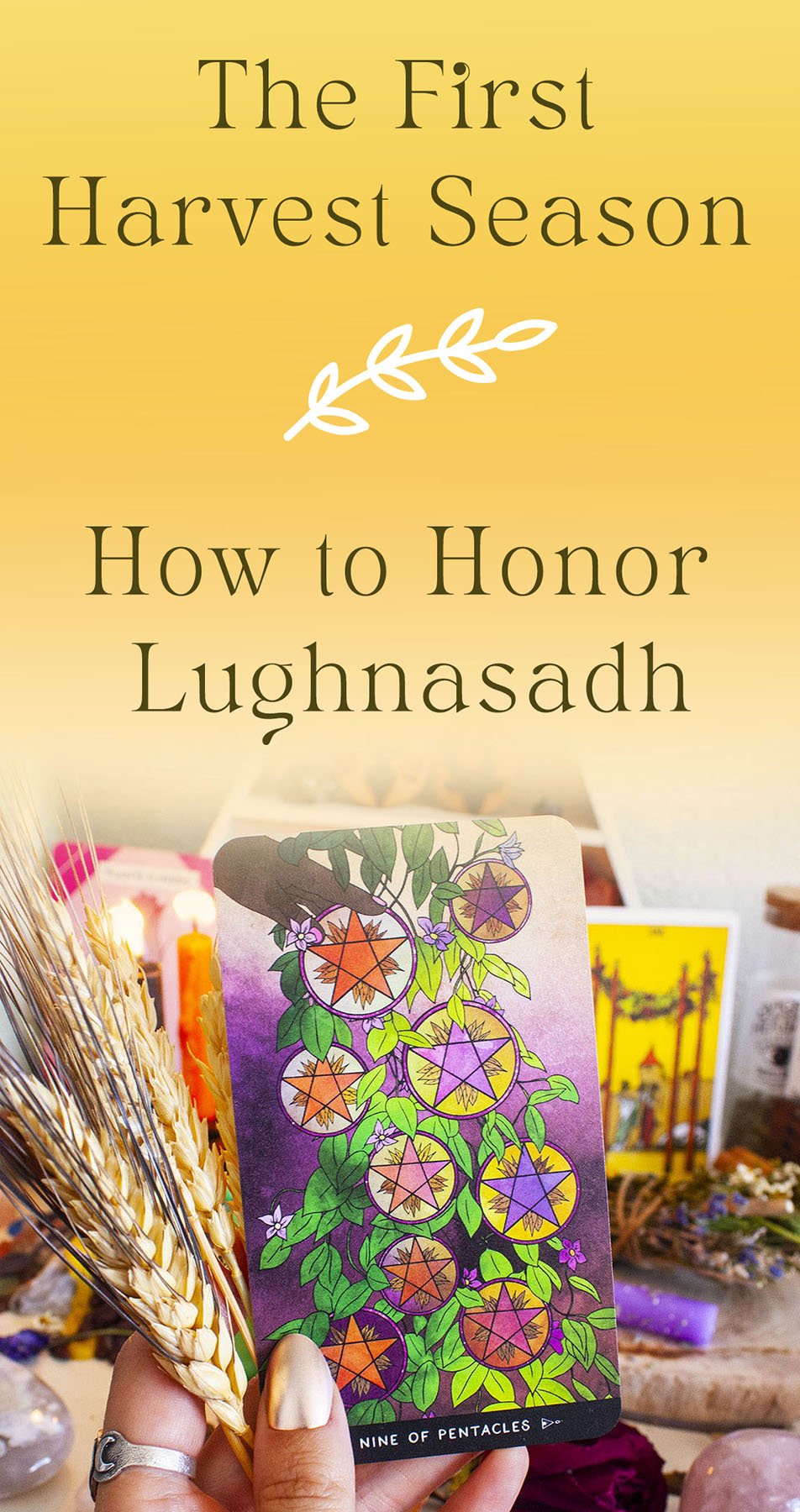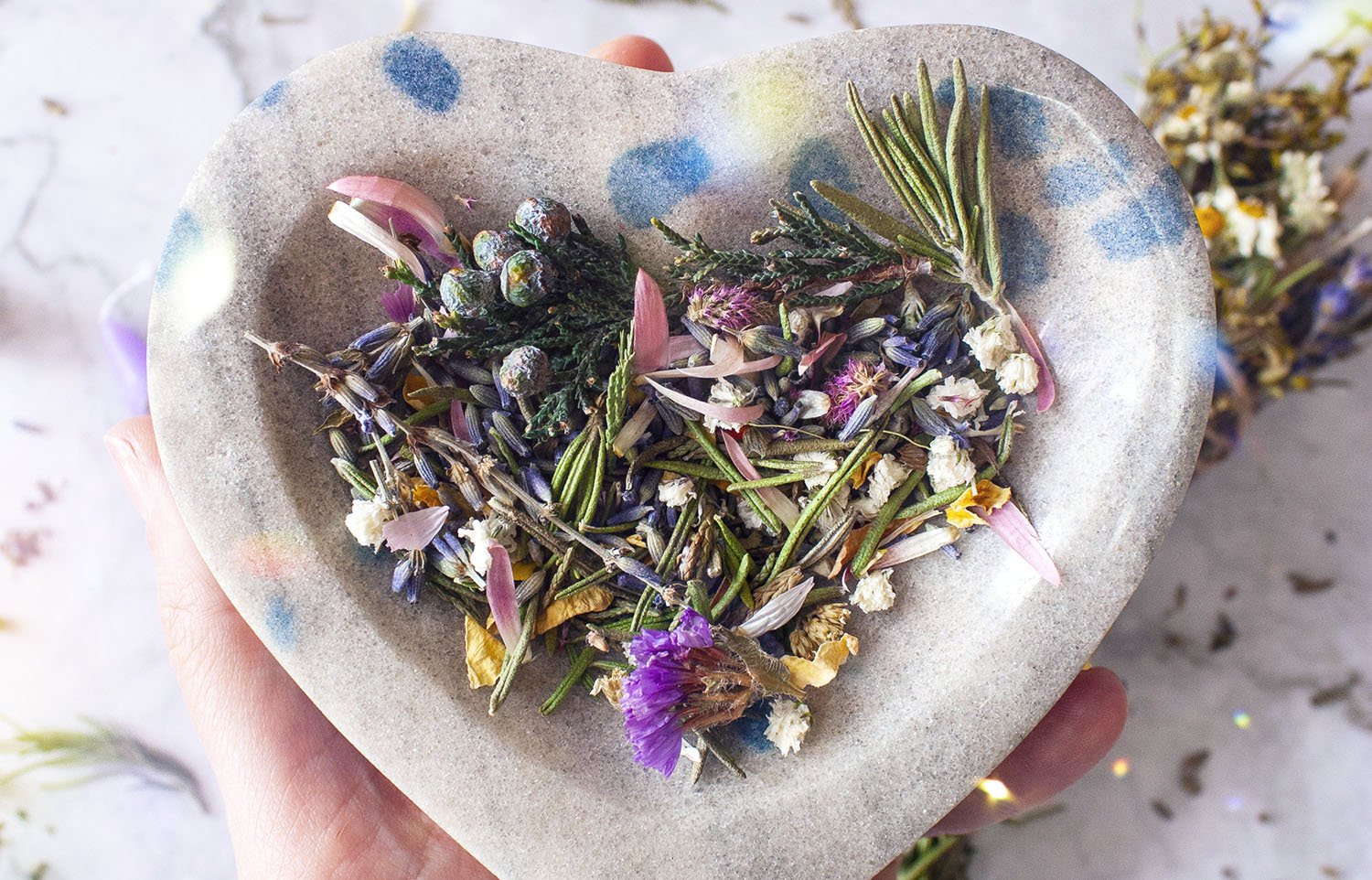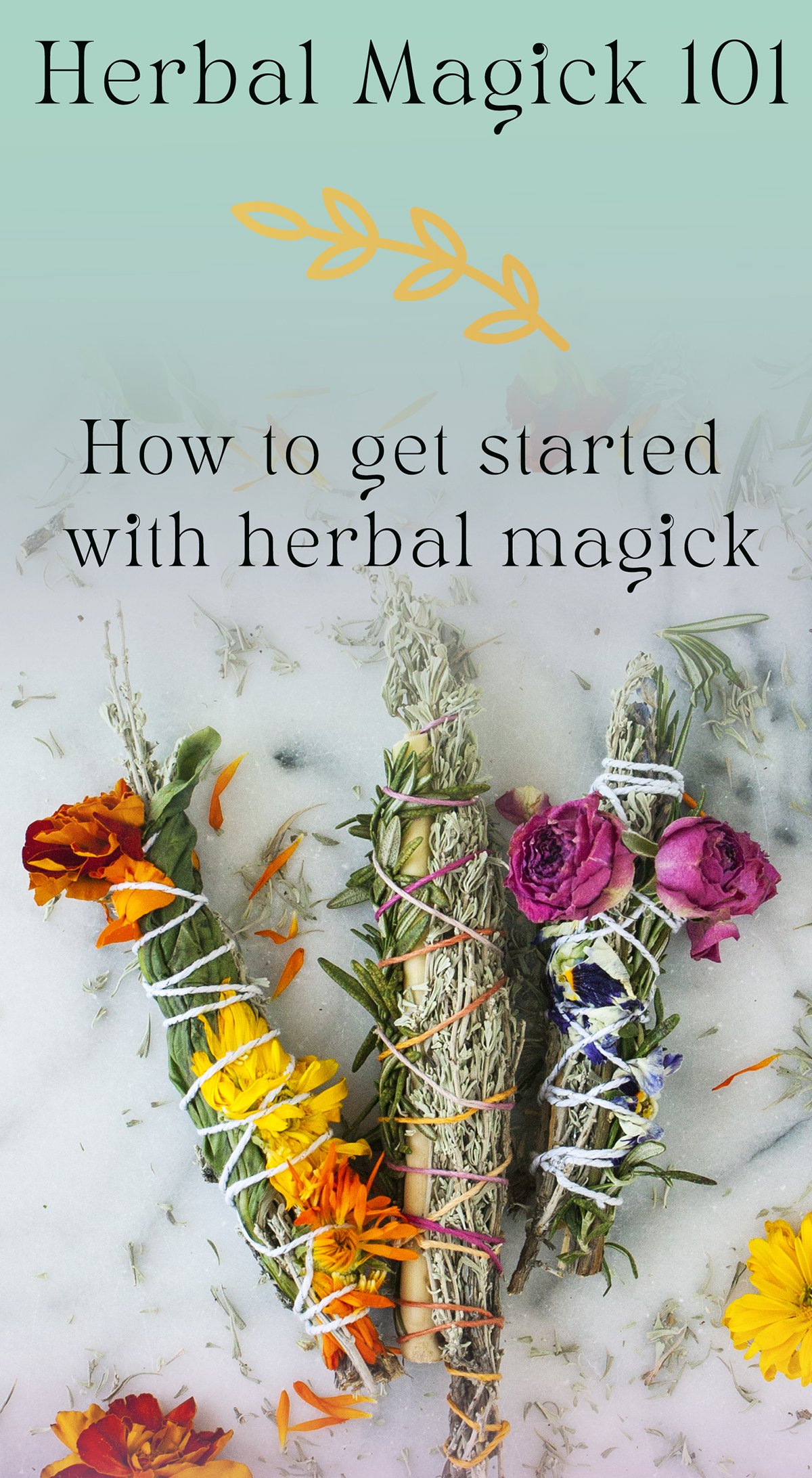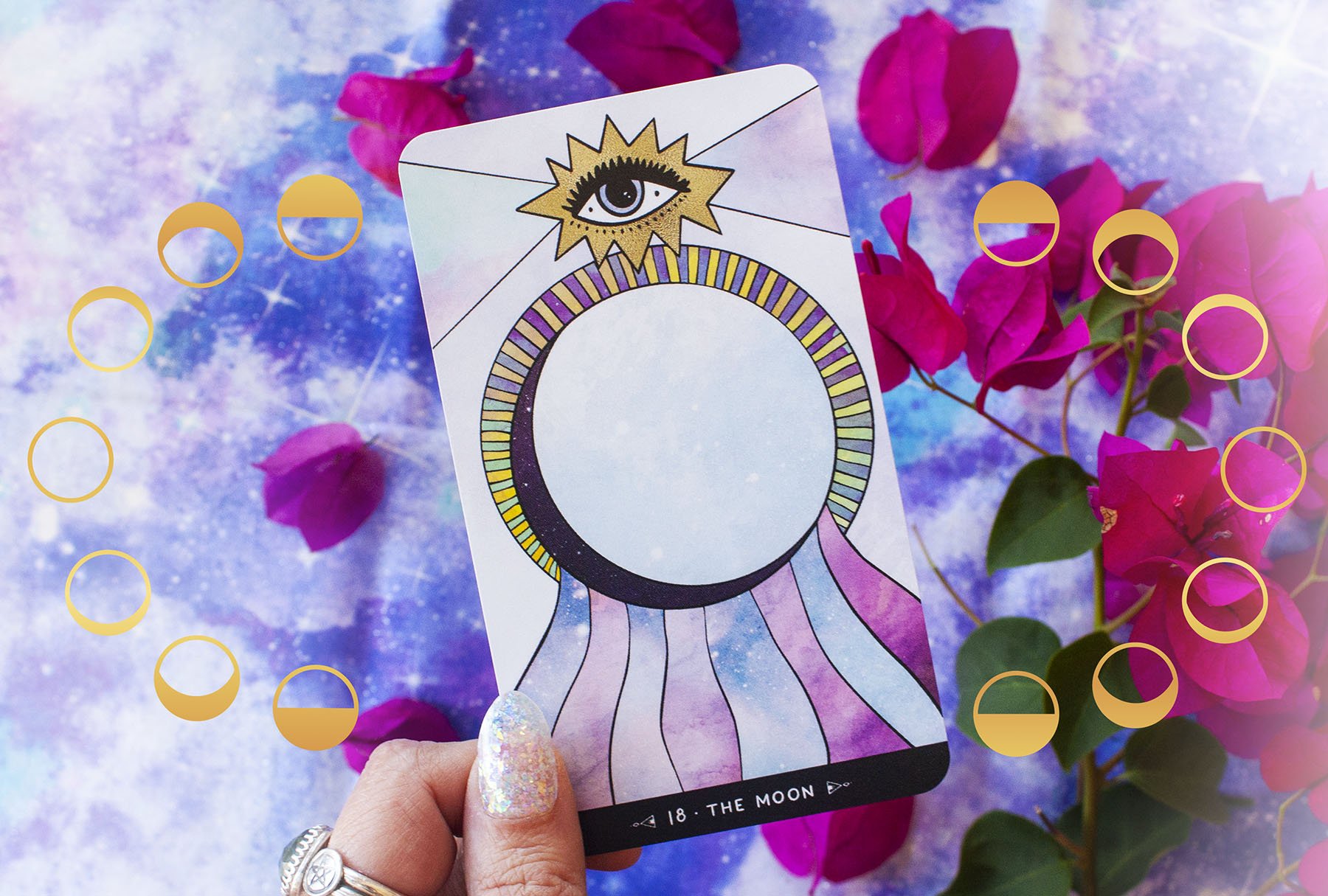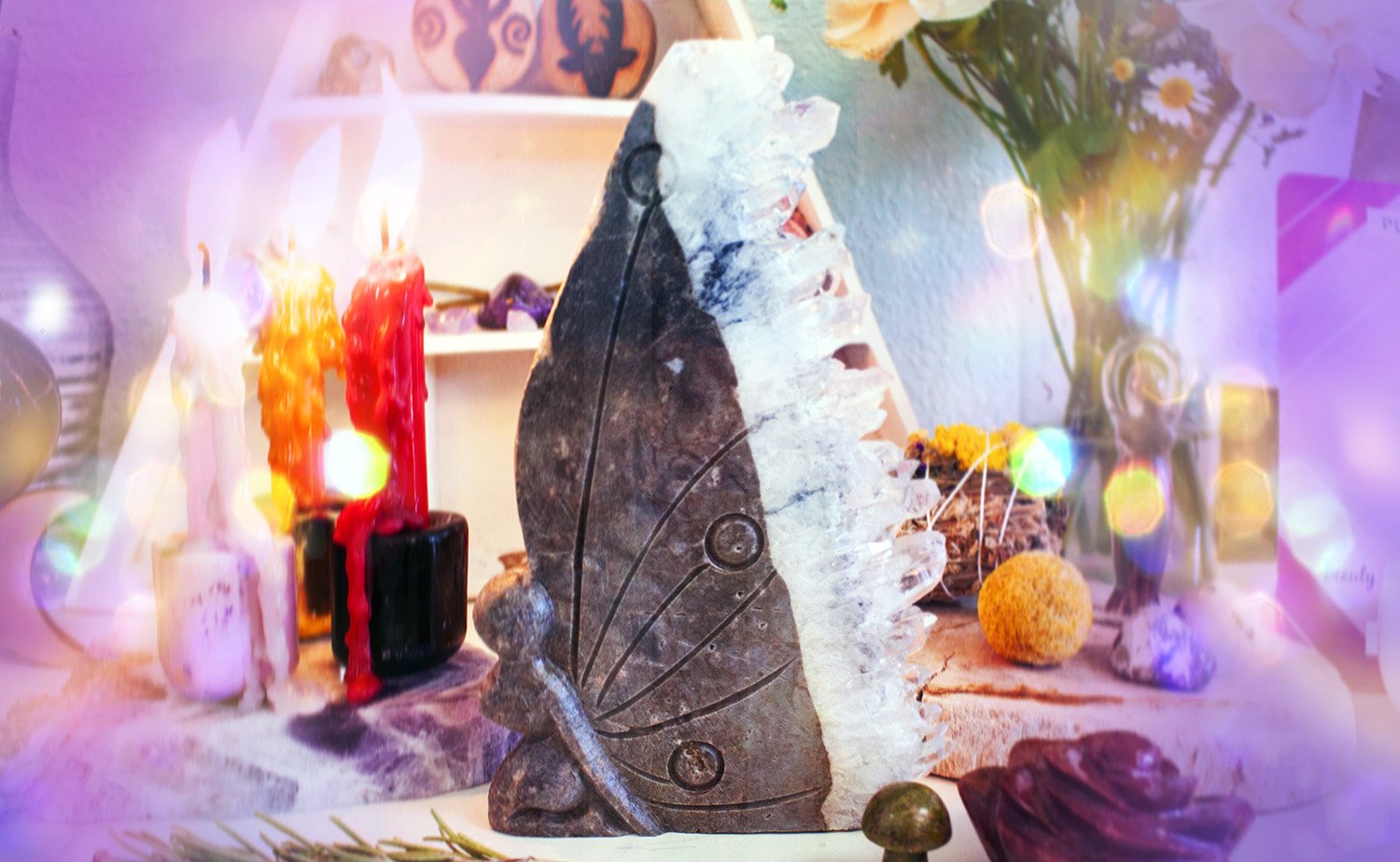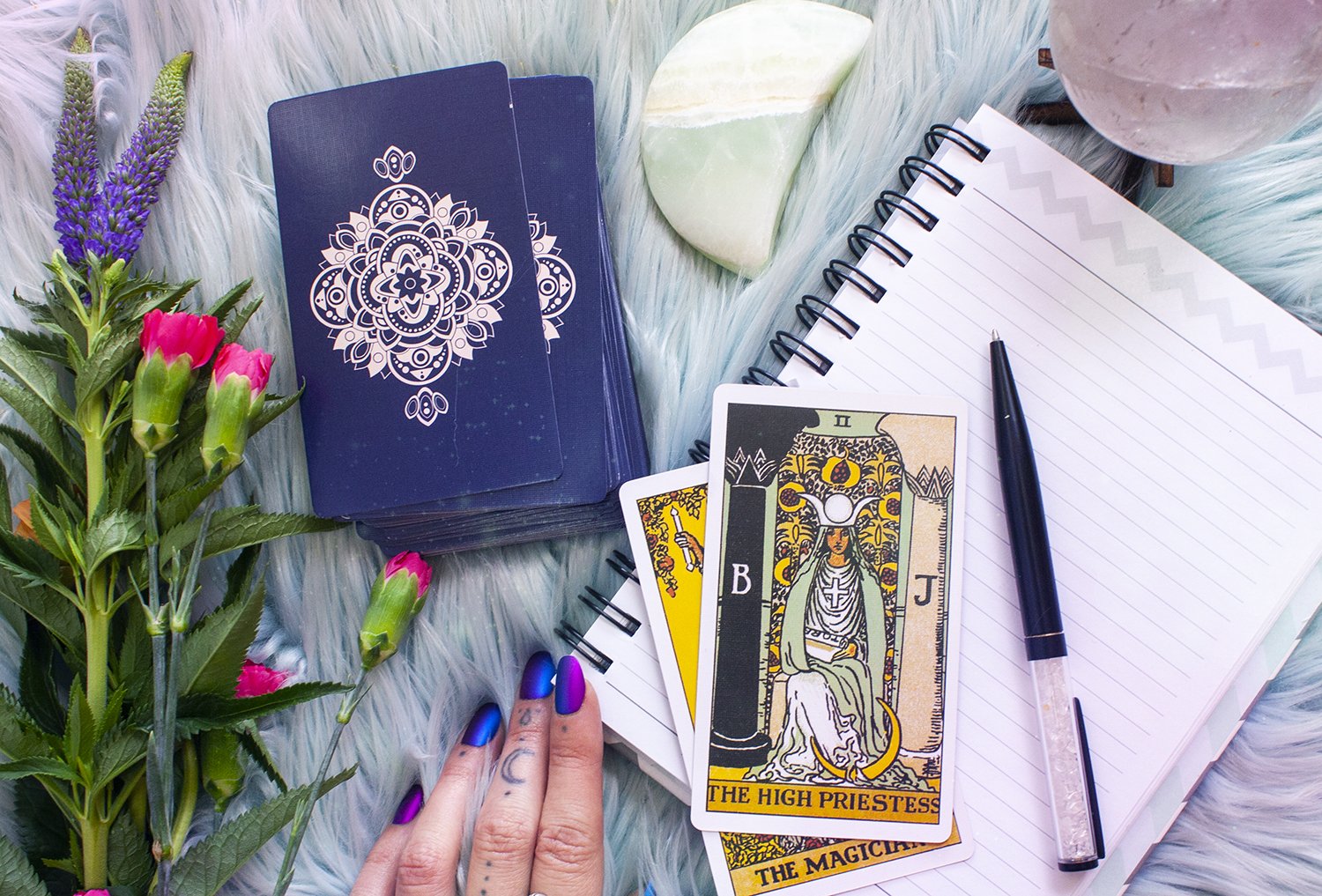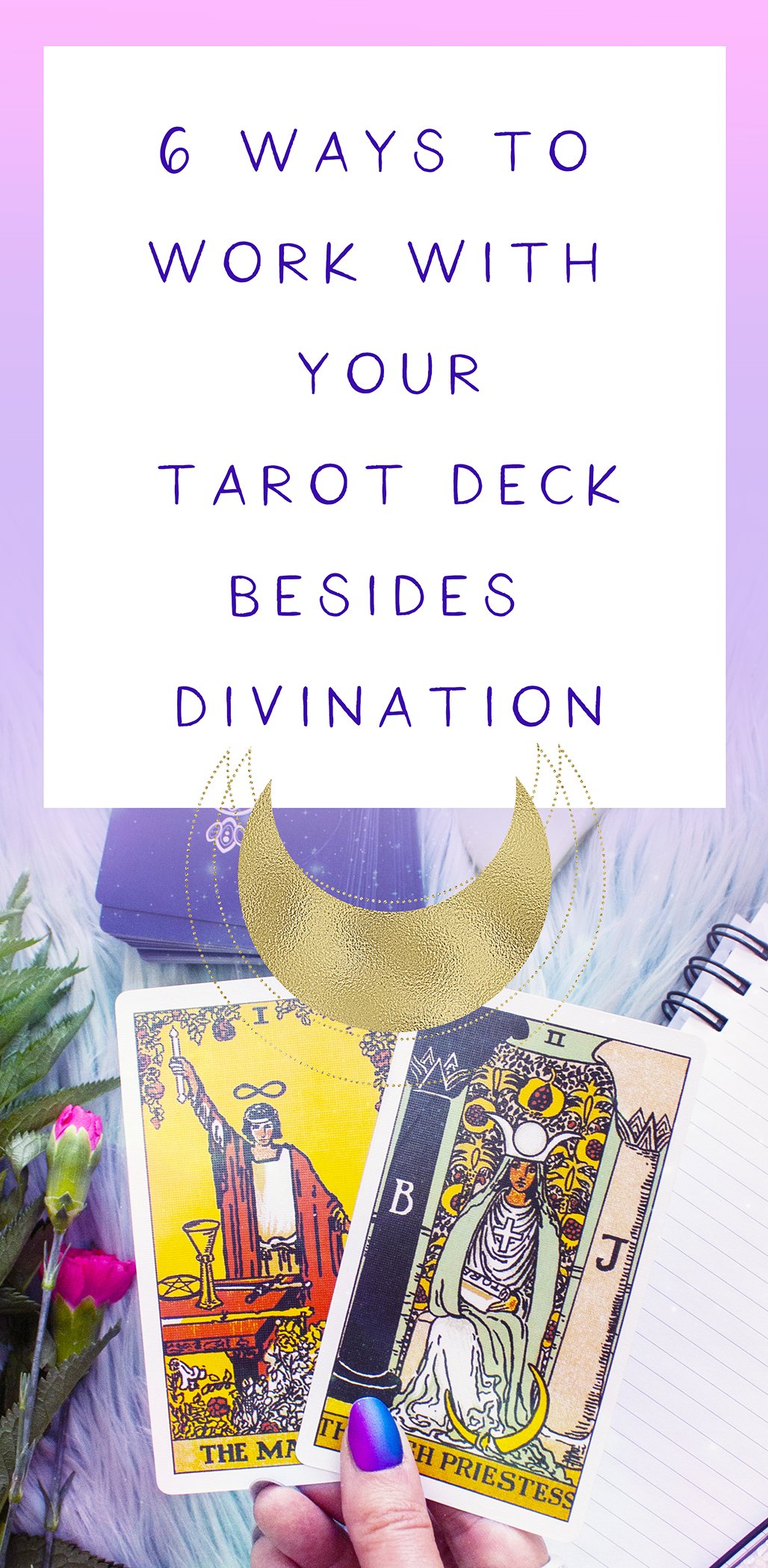How to Dress a Candle for Spellwork
Candles are included in spellwork, and there’s a reason why. Fire magic is powerful — it can help transform energy, focus your desires, send intentions into the universe, burn away what you want to release, and more.Candles are powerful on their own, but dressing a candle for spellwork can help amplify and intensify your spell.
Candles are included in spellwork, and there’s a reason why. Fire magic is powerful — it can help transform energy, focus your desires, send intentions into the universe, burn away what you want to release, and more.
Candles are powerful on their own, but dressing a candle for spellwork can help amplify and intensify your spell. In this blog post, I’ll be breaking down how to dress a candle for spellwork. To get more of an intro to candle magick, check out this blog post.
WHY DRESS A CANDLE FOR SPELLWORK?
Dressing a candle spellwork can mean rubbing a candle in oil and/or rolling a candle in herbs. Using herbs and oils that support the intention you’re working with can help you amplify your spell, making it more powerful.
Below, I share some correspondences for oils and herbs to help you decide how to dress your candles most effectively.
HOW TO DRESS A CANDLE FOR SPELLWORK
Here are some loose guidelines for dressing your candles for spellwork:
1. Cleanse your candle. You can cleanse your candle with salt, smoke, sound, or any other cleansing tool that feels good to you.
2. Rub your candle in oil. As you do, focus on the intention of your spell.
3. Roll your oiled candle in herbs if you’re using them. Again, direct your energy towards your spell’s intention as you roll your candle. Stay present, breathe, and focus on connecting your intention to your candle.
OILS, HERBS & CORRESPONDENCES FOR CANDLE MAGICK
Before I get into correspondences, a note about oils: you can feel free to use neutral oils like sunflower seed oil or coconut oil. When you work these oils, they act more as a vehicle for your herbs than an intention amplifier on their own.
Explore the Radical Candle Magic class.
If you want to use an oil that brings its own amplifying qualities, you’ll be using essential oils. If you decide to use essential oils, I invite you to be really intentional with them, buy small amounts only, and research as much as you can to find companies that are making them in the most sustainable and ethical ways possible. The same goes for herbs - do your research and make sure you’re gathering any herbs you use ethically.
Featured deck is The Ritual Deck.
For pleasure spells - Use red or orange candle colors. Use clary sage, lavender, or sandalwood oil with rose petals or other flower petals, ginger, or calendula.
For abundance spells - Use green, brown, or gold candle colors. Use basil, cinnamon, or frankincense oil with cinnamon, basil, or ginger.
For creativity spells - Use orange, yellow, blue, or purple candle colors. Use tangerine or peppermint oil with verbena, bay leaves, or angelica.
For intuition spells - Use blue, purple, or silver candle colors. Use myrrh, or clary sage oil with mugwort, chamomile, or rose petals.
For protection spells - Use brown, black, or blue candle colors. Use clove, cypress, or juniper oil with mugwort, mullen, or comfrey.
For releasing spells - Use yellow, orange, or black candle colors. Use bergamot or geranium oil with cloves or rosemary.
For love spells - Use red, orange, or pink candle colors. Use cardamom, jasmine or ylang-ylang oil with yarrow, oregano, or fennel.
Want more on spellwork? Check out these blogs:
Harvest Season Begins // How to Honor Lughnasadh and Your Gifts
Lughnasadh is the first harvest and the first celebration to honor the waning phase of the year. Just like the waning gibbous, this season is a time to reflect, harvest, gather, reap, and allow yourself to come to fruition. The flurry of growth has happened. The peak of summer has come and gone. Though it may still be hot where you are, some “crops” are ready to be harvested, both physically and metaphorically. So, what does this season mean for you, and what does it call you to explore and reflect upon?
Lughnasadh is the first harvest and the first celebration to honor the waning phase of the year. Just like the waning gibbous, this season is a time to reflect, harvest, gather, reap, and allow yourself to come to fruition. The flurry of growth has happened. The peak of summer has come and gone. Though it may still be hot where you are, some “crops” are ready to be harvested, both physically and metaphorically. So, what does this season mean for you, and what does it call you to explore and reflect upon?
This post will discuss the intersection of the first harvest season, Leo season, and Lughnasadh. We’ll explore a bit of history about the Celtic God Lugh and how he fits into all of this. Lastly, I’ll offer a few ways to honor and work with the energy of this season.
Listen to this blog post on my podcast, Rooting into Wholeness below.
What is Lughnasadh, and is it the same as Lammas?
On the wheel of the year, Lughnasadh is traditionally celebrated on August 1st or the first harvest. It is the midway point between the Summer Solstice and the Fall Equinox. As always, I encourage you to celebrate at a time that’s meaningful for you. For example, if you do gardening or farming, it’s fine to wait until you’re actually ready to harvest. Alternatively, if you want to celebrate on the 1st, that’s fine too.
I feel that the Sabbat of Lughnasadh (loo-nah-sah), also called Lammas, is one of the more undervalued seasonal celebrations. I prefer to stick with the name Lughnasadh as it is more in line with my spiritual beliefs and paths (I think its spelling puts many off, but it’s really a quite beautiful name.) The name Lammas comes from the phrase “loaf mass” and is the Christianized version of the original celebration to honor the God Lugh and the first harvest. This is truly one of my favorite times of the year.
Who's Lugh?
The name Lughnasadh comes from the well-documented Celtic warrior and sun God, Lugh. His name actually translates to “light.” Lugh was a skilled craftsman who bore many talents. He created Lughnasadh as a celebration of the first harvest and to honor his foster mother.
Lugh is deeply intertwined with the harvest season because, according to lore, he brought the knowledge of growing and harvesting crops to hunter-gatherer tribes after winning a battle with an old King. Of course, knowing how to grow and harvest crops was life-changing for our ancestors from Northern and Western Europe. This is another reason I prefer to refer to this celebration as Lughnasadh. It honors the triumphs of our ancestors. Our ancestors did not always grow their own crops, but when we did, it changed everything. Thus the first harvest is of incredible importance and something to thank our ancestors for to this day.
On an energetic level, Lugh is a reminder to continue to refine our crafts, learn new skills, and honor our talents both on an individual and collective level. This is a highly celebratory season and, pride is a big theme of Lugh and Lughnasadh.
Leo Season and Lughnasadh
This naturally brings me to Leo season! For Tropical astrology (what I use), Leo season begins on July 23rd and aligns beautifully with Lughnasadh. Leo is ruled by the Sun (we can see another overlap here with the God Lugh.) This is indeed a very sunny time of the year, physically and metaphorically speaking. Now I won’t dive too deep into the astrology of Leo because it's been covered on this blog more extensively here, but here are a few things to note. Leo, a fixed fire sign, calls each of us to find the inner strength to share our gifts and true selves with the world boldly. Leo connects with strength and the sun in the tarot, again mirroring a need to share your gifts boldly with the world and again connecting Lugh to this season through the sun card.
I’m sure you can now see and perhaps even feel the immense power, strength, and celebratory energy associated with this season and its many components! Not all of our seasonal and zodiac energies align this beautifully, but this one does so beautifully.
Rituals Suggestions for Lughnasadh
How can you harness this potent energy offered by Lughnasadh and Leo season? Here are some coming dates and four considerations for connecting with and honoring the energy of this season. I’ll focus on the themes we’ve already discussed of harvest, pride, and full expression.
First, we have the new moon in Leo from August 8-9 (2021). This will be an ideal time to be open to spirit for new ways to share your gifts with the world and consider being open to new ways to express yourself and your gifts.
Then we have a full moon in Aquarius on August 22nd (2021.) This will be an ideal time to express your truth and focus on themes of harvest and gratitude.
Now some ritual suggestions. Of course, I always like to preface any ritual suggestions with some reminders. First, I view each celebration on the Wheel of the Year as a season. This means you do not have to do all of these things on August 1st. I certainly won’t be and wouldn’t suggest it either (unless you really want to and don’t have twins at home like me!) Space it out, do what you feel called to do when you feel called to do it. Our ancestors did not complete their harvests in one day (in fact, it sprawls three entire seasons), they merely began. I always like to remind you to approach each Sabbat as a season rather than a day. Never discount the power of being aware and sitting in the energy of each season. This in and of itself is a ritual. Lastly, and as always, take what you like and leave the rest.
1. Pride Ritual
So many of us, myself included, rarely celebrate and honor our accomplishments. Seriously, I am so bad at this! I have really worked on celebrating all that I’ve accomplished and have friends who keep me in check and remind me often. Now it's time for you to get clear and honest about this, when was the last time you really celebrated your wins?
In our capitalist-driven world, the primary message we receive is "create, create, and create more." This is one big reason why working the seasons into your spiritual practice is so valuable. You are not meant to create all the time! Furthermore, you not only need rest and self-care, but you also need time to honor and celebrate how far you've come.
This one can be easy, join me. Right now, pause and think about three amazing things you’ve done this year. I don’t care how big or small they are, but I want you to sit in the energy of pride and celebration for yourself. My three are that I took a step back from work to take time off and work less, I started exercising again, and I wrote two books and created a tarot card deck. Sit in it. What does it feel like to celebrate yourself? Does it feel uncomfortable? Are you coming up with all the things you wish you’d accomplished but haven’t yet or all the things you still “need” to do? Kindly ask all of that garbage to step back for a moment while you revel in what you have accomplished. It’s time to harvest your efforts and take in your growth.
If you want to take this a step further, write it down and place it on your altar, maybe light a candle for yourself, so often we light candles for others. When was the last time you lit one for yourself? Consider making or buying yourself a treat to celebrate your accomplishments. This could be as simple as making yourself your favorite dinner or giving yourself time and space to watch a favorite movie. What feels like a beautiful way to celebrate your accomplishments right now?
2. Gratitude Offering for the Mother Earth
With any harvest comes gratitude. This is a theme we’ll see in each of the three harvest seasons (Lughnasadh, the autumn equinox, and Samhain.) I think it’s important to honor the earth for every seasonal celebration, but even more so for our harvest celebrations. Even though most of us do not have an active hand in growing and harvesting the food we eat, these harvest celebrations are what kept many of our ancestors alive. It gives us an opportunity, or reminder, to give thanks to mother earth for all of the nourishment she’s given us throughout the year; if you do harvest around this time of year, even better! You’ll have a tangible way to honor this season and the earth. For those who don’t, here are some ways to consider giving thanks to the earth for the bounty of food you have.
Create an earth offering of flowers, stones, food, or other compostable items you resonate with. I like to do this by going for a walk and collecting different items that catch my eye. Then, I’ll find a location I feel called to set up my offering. This could be a mandala or any arrangement that feels good to you. As you set it up, think about all of the gifts the earth has given your this year, all the food you’ve been nourished with.
You could also take this ritual inside and create another offering on your altar space as a gratitude offering to mother earth.
3. Explore Lugnasadh and Leo in the Tarot
For this one, we’ll be circling back to our Leo energy a bit more. This would be a great ritual to practice anytime during the waxing growth phase of the moon from August 1-22nd, with the intention of tapping into expressing your gifts and focusing again on the theme of harvest.
As I already mentioned, the cards that correspond with Leo in the tarot are the sun and strength. There’s also a perfect card for Lugnasadh too, and that’s the nine of pentacles. I feel like this card embodies the energy of this season soooooo beautifully. Numerologically speaking, nine’s represent fulfillment and fruition. Pentacles are our suit of earth. So the nine of pentacles, in my opinion, is very literally a card of harvest.
Card featured from Journey Tarot. Get it here.
There are so many ways to connect with these cards. As I mentioned, the waxing phase or the full moon are great times to work with the energies of these cards. Perhaps, even consider lighting a red or orange candle to focus on the fiery energy of the sun and strength. You could journal with these cards, meditate with them, simply place them on your altar, or draw your own versions of them, as I’ve mentioned in previous rituals. Be open to their lessons and what they have to offer you during this season.
4. Traditional Lughnasadh Rituals and Correspondences
Of course, I can’t leave you without covering some of the more traditional rituals and correspondences for this season. Some we’ve already covered but here’s a list of common correspondences. Most of these come straight out of my new book, “Understanding the Wheel of the Year”.
Colors: Gold, red, orange, purple, tan
Plants and scents: Sunflower, calendula, hops, vervain, rosehips, or anything seasonal where you live
Food: Wheat, corn, bread, beer, berries, or anything seasonal where you live
Crystals: tiger’s eye, red jasper, pyrite, smokey quartz
Traditional Lughnasadh Rituals:
Bake bread, enjoy bread, leave a bread offering on your altar or in nature
Make beer, enjoy some beer (only if of age, of course)
Spend time in nature
Practice gratitude
Connect with the God Lugh and Goddess Gaia
Perform abundance spells. Find a past post with abundance spells here.
Decorate your home and altar with correspondence suggestions above
That wraps up my formal ritual suggestions. Of course, the best thing you can do for yourself anytime you want to honor celebrations on the Wheel of the Year is to get outside and be in nature. You can come back to this post anytime throughout the season of Lughnasadh for ideas to connect with this season, anytime the inspiration strikes!
If you’d like to dive deeper into this celebration or the Wheel of the Year, my new book “Understanding the Wheel of the Year” is available to order. You can also find a past post by Eryn Johnson here. And, one of my personal all-time favorite books on the Wheel of the Year is “The Magical Year” by Danu Forest. Let the harvest season begin! It’s time to honor and celebrate how far you’ve come.
Herbal Magick 101 // How to Get Started with Herbal Magick
Herbal magick is the practice of working with plants in magic. This could mean working with plants for healing, eating, ritual, spellwork, and more.Why work with herbal magick? To me, plants connect us to ancestry and the land we’re on. They root us into relationship with nature, with mother Earth. They have energy and magic of their own that can amplify a spell, help us heal, and support our intentions. Part of living a magical life is engaging with the world around us, and working with plants feels like a powerful way to do that.
Herbal magick is the practice of working with plants in magic. This could mean working with plants for healing, eating, ritual, spellwork, and more.
Why work with herbal magick? To me, plants connect us to ancestry and the land we’re on. They root us into relationship with nature, with mother Earth. They have energy and magic of their own that can amplify a spell, help us heal, and support our intentions.
Part of living a magical life is engaging with the world around us, and working with plants feels like a powerful way to do that.
In this blog post, I’ll be sharing about how to get started with herbal magick. Please note that this is coming from my perspective as someone who works with plants personally and is not an herbalist or trained professional!
GETTING STARTED WITH HERBAL MAGICK
Getting started with herbal magick can feel overwhelming. There are so many plants! What do they all mean? What do you use them for?
I recommend starting your herbal magick journey by asking this question:
What plants do I have relationships with already/love/feel curious about/find myself attracted to?
You can jot down a list or just one plant that comes to mind. Maybe it’s a plant you’ve heard about being connected to your ancestors, like rosemary. Maybe it’s a plant that grows in your yard or your local park, or one you love to drink in your tea.
Choose a plant from your list and commit to getting to know it. There are so many ways to cultivate a relationship with plants, but here are a few:
Meditate with the plant daily
Take the plant as a flower essence
Eat the plant or drink the plant in a tea (check with an herbalist first as needed)
Take a bath with the plant (check with an herbalist first as needed)
Journal with the plant
Work with the plant in ritual
Invite the plant into your dreams
Spend time with the plant
Grow the plant and tend to it
Featured cards are from The Ritual Deck.
Take your time with this process - perhaps sitting with one plant for at least a month or two. Write about your insights as you cultivate this relationship. How do you feel? What is this plant teaching you? How does it feel best to work with this plant?
Another important question to ask yourself is: how am I in a reciprocal relationship with this plant? That could look like giving the plant or the land offerings, planting this plant’s seeds, or something else that feels right to you.
Many herbalists are talking about being in a reciprocal relationship with plants, so I recommend checking out their work (Sarah Corbett over at Rowan and Sage is a great place to start) to learn more about being in right relationship rather than just extracting from plants.
Over time, as you cultivate relationships with plants one at a time, you can start to make note of your own magical herbal correspondences. What plants support you in different ways? From sitting with them deeply, what plants help you soothe anxiety, sleep, open your heart, tend to grief, cultivate joy, access pleasure, focus, and more? What plants aid your love spells, money spells, self-trust spells?
This is how herbal magick can become intuitive and not prescriptive, how it becomes more personal and more powerful than a Google search could ever be.
Sending you lots of love on your herbal magick journey! Click here to learn more about crafting herbal smoke wands, or here for herbal tea recipes.
The Moon as Shadow Work // How Aligning with the Moon Invites Shadow Work and Tips to Make Lunar Work a Daily Practice
The moon comes after walking through the tower and the renewed spark of inspiration from the star in the tarot. The moon serves as a portal between worlds, sitting in between the star and the sun. The star is the inspiring rebirth and the sun is the ego-self, shining bright. But in between them, the moon shows up to call you inward. It's an invitation to explore everything that's come to pass at the subconscious level.
The moon comes after walking through the tower and the renewed spark of inspiration from the star in the tarot. The moon serves as a portal between worlds, sitting in between the star and the sun. The star is the inspiring rebirth and the sun is the ego-self, shining bright. But in between them, the moon shows up to call you inward. It's an invitation to explore everything that's come to pass at the subconscious level.
It's within this portal that shadow work comes in, which could go by so many other names: soul work, subconscious work, "dark night of the soul," or emotional exploration, etc. Shadow work calls you in to peel away the surface and explore the parts of yourself that you often ignore, hide, or push away.
Listen to this post on my podcast, Rooting into Wholeness, below.
The moon's light is not her own. Its light is reflected by the sun. The moon is the mirror. What shadowy areas within your soul need to have a mirror held up to them?
Shadow work, like the moon, is a portal to wholeness. One cannot exist without the other. Your shadow work is still there even if you are not addressing it. It does not just go away. It remains untouched and undiscovered. A powerful healing tool waiting to be utilized and waiting to bring you to wholeness.
So many want to skip over this important portal. Here's the thing, though. You can't. The opportunity will keep repeating itself until you decide to walk through the shadowing realms of your subconscious. In my experience, I've learned that if you ignore your shadow long enough, it will come crashing down and force you to examine what needs to be learned and seen. No amount of love and light can keep you from knowing all facets of life. We're human. It's why we're here.
How to work with the moon to honor your shadow
How can you embody the energy of the moon, her wisdom, to approach this inner shadow work? It starts as noticing the moon in her phases and turns into allowing these phases to influence your rituals. The shifts will be subtle, but eventually, shadow work will become a regular part of your life. Here are three ways to start weaving more lunar energy into your daily practice.
Much of this work is observational and feeling work that needs to happen within the mind and body. All other tools (crystals, herbs, cards, etc.) and are ancillary allies. Use them if you feel called, but do not let them be prohibitive to your growth if you do not have them handy.
1. Become more aware of the moon. Let's first start by connecting with lunar energy regularly. Track her, notice her, and notice how you feel in her different phases. If working with the moon is new to you, start by solely noticing when the moon is in her waxing phase vs. waning phase (I find this more helpful than tracking the new/full moon.) Learn more about waxing vs. waning lunar energy in a past post here.
When you begin to adopt the moon's cycles into your daily life, you will begin to understand the necessity of living more cyclically. Rather than shaming yourself for needing to go within, you will appreciate it as a natural phase. Here's a non-exhaustive list of some ways that I connect with lunar energy regularly.
Look for the moon anytime you are outside at night or consciously decide to go outside and seek her out regularly. You will soon learn where the moon lives in the sky during different parts of her cycle.
Track her with an app. I like to keep a pulse on when the moon shifts from waxing to waning phase and vice versa. Using an app is an easy way to know when these shifts happen. I also like to know what astrological sign the moon is living in as this also affects her energy. My favorite app is The Moon App. The free version is great, but I prefer the paid version.
Wear a specific piece of jewelry is a reminder of whether the moon is waxing or waning. I have a moon-shaped ring that I flip, so the moon is facing inwards or outwards according to whether the moon is waxing or waning. However, there are many ways to do this. You could wear a specific necklace, ring, or bracelet for waxing vs. waning energy. Doing this brings the energy of the moon into the physical and offers you a daily reminder.
2. Bring the moon into your rituals. If your ritual practices only include rituals to make you feel good or to manifest, you're missing out on some big growth opportunities and magick-making. When you invite lunar energy into your rituals, you open the door to more profound transformations through shadow work. The moon does not stay stuck in her growth, waxing, manifesting phase, and neither should you.
Everyone's ritual practice varies, but there are ways to bring lunar energy into just about any ritual. Bringing lunar energy into your rituals will require you to be more mindful about your ritual practices. Here are a few ways to work lunar energy into common ritual practices.
Burn candles and herbs in line with lunar energy. If candle magick, incense, or herbs are a part of your ritual practice, this is an easy place to honor the moon. How can you be more mindful about what candle colors or herbs you're working with? For example, I would avoid more energizing plants and colors like peppermint, citrus, and candle colors like red, orange, and yellow during a waning moon phase. I will often burn a simple white candle during a new moon, and during a dark moon, phase black.
Invite lunar energy into your meditation practice. Honoring the moon in your meditation practice can be done for each phase or just waxing and waning energy. If you already have a meditation practice, this will be a simple way to begin engaging with the moon's energy on a deeper level. In my meditation practice, this looks like doing more energy clearing at the end of the waning moon phase, being more open to guidance from Spirit at the start of the waxing phase and around the new moon, and focusing on gratitude during the full moon. I wrote a full post about it here.
Place specific items on your altar or sacred space for certain moon phases, or consider an altar refresh for specific moons. If an altar is a part of your ritual practice, be open to how you can weave lunar energy into your sacred space. I usually update my altar based on the seasons. However, some lunar events warrant a full altar refresh. I invite you to trust when you feel called to do this. Even if you don't want to refresh your altar completely, placing specific herbs, candles, or tarot/oracle cards on your altar for specific phases can also be a powerful way to connect with the moon.
Simple changes like these begin to make working with the moon a part of life and a way of living. You can find many blog posts here about working with the specific energy of each moon phase. However, I do find some of these basic things just as impactful as they make honoring and connecting with the moon more of a daily practice rather than something you only do on new and full moons.
3. Study the moon card in the tarot (any deck.) While studying the moon card, notice what comes up for you? Each deck will bring a different kind of flavor, but the energy of the moon card will remain consistent from deck to deck, as will the placement of the card amongst the Major Arcana. This may not be true if working with moon card in an oracle card deck (learn more about the difference between tarot and oracle cards here.)
Notice the cards around the moon in the tarot and the story they tell. Where does the moon sit in the Major Arcana? What cards are nearest to it? I discussed this a bit in the introduction. But one way to view its placement is as a portal between the star and the sun. Like all wisdom from the tarot, allow yourself to be open to different teachings and ideas. This is just one viewpoint. The wisdom in this step will come from finding your own meaning from the moon card in the tarot. Here are some ways to work with this card.
Place the card on your altar or somewhere else where you'll see it regularly.
Journal or meditate on the moon card. What comes up for you when you look at it? What stands out? What does it mean to you at this moment?
Read about the meaning of the card from different perspectives. Some of my favorites are Rachel Pollock's book 78 Degrees of Wisdom and teachings from Lindsay Mack on her podcast Tarot for the Wild Soul.
Draw your own version of the card. What comes to your mind when you think about creating your own version of the moon card? Allow yourself to be a channel for its wisdom.
If you find these offerings overwhelming, begin implementing what feels the most aligned and appealing to you. Or, if you feel up for a fun shift in perspective, select the one that feels the scariest to you!
Working with the moon as a spiritual practice is an invitation to honor all phases of life, including death, shadow, and transformation. These are necessary phases of all life, even yours. When you open yourself up to being in alignment with all of these phases, you open yourself up to being whole, flawed, and simultaneously perfect. The shifts and changes to living alongside the moon will happen slowly over time. Until one day, you realize you allow and honor all of your phases.
This shift is the magick of embodying shadow work, living cyclically, and aligning with the moon. For more on shadow work, check out these past posts.
Fae, Faeries, and Fair folk! Who are They & 3 Ways to Connect with Them
The fae go by a variety of names, including but not limited to fae, fair folk, faeries, and fairies. The size and appearance of faeries will vary depending on your location and personal beliefs. Some see faeries as human-sized, while others see them as smaller beings.Faeries are a magical species of human-like beings. They live in a spirit realm alongside, but separate, from our physical world. This realm is referred to as otherworld or underworld.
The fae go by a variety of names, including but not limited to fae, fair folk, faeries, and fairies. The size and appearance of faeries will vary depending on your location and personal beliefs. Some see faeries as human-sized, while others see them as smaller beings.
Faeries are a magical species of human-like beings. They live in a spirit realm alongside, but separate, from our physical world. This realm is referred to as otherworld or underworld. In my practice, I refer to this space as otherworld and will refer to it as such throughout the rest of this post.
Similar to humans, the fae are not a monolith! There are benevolent and malevolent faeries. Many report them as being quite mischievous, and some even say they're dangerous. It’s important to remember that just like forming a relationship with a new human, you need to determine a faerie's intentions before engaging. Always approach anyone from the spirit realm both respectfully and carefully.
Folklore about faeries is most common in Ireland, Wales, England, and Scotland but certainly pops up in other parts of the world as well. The idea of a “spirit of place” or genius loci, which faeries are, is common for many practices. Even if you don’t work with faeries in your practice, you may have a similar entity in your spiritual lineage or a similar kind of being where you currently live.
Rather than assuming the fae will appear to you like Tinkerbell, I invite you to be open to how the spirits of your locality and lineage may present themselves. Elves, gnomes, tree spirits, animals, and more can all be present as local spirits.
Why Would You Want to Connect With The Fae?
At this point, you might be wondering why you’d even want to bother connecting with the fae. In fact, some highly advise not to interact with the fae at all! This is a personal choice you’ll need to make. All I can share with you is my personal experience.
I have spirit guides in otherworld who are faeries, and my experiences have been overwhelmingly positive. Beyond my personal experience, the fae do live in a spirit world less dense than ours, so they also have a very different perspective. I think most of us could learn a great deal from a different perspective!
The second reason I think it’s important to connect with fae, or your local spirits, is to form a better relationship with the natural world and the spirit world. It takes conscious practice to form a relationship with any being in the spirit world. Doing so can be a powerful and enlightening experience.
Here are three simple ways to start building a better relationship with the fae or any local spirits in your area.
3 Ways to Connect with Faeries
The seasons of Beltane and Samhain are two of the best times to interact with the fae. If you’re catching this post during another season, don’t fret, you can still try these techniques. It might just take a bit longer to see any results. During Beltane and Samhain, sabbats opposite each other on the Wheel of the Year (find more about the Wheel of the Year and a free printable here), the veil between the spirit and physical world is at its thinnest. The thin veil makes it easier to reach the home of the fae, also known as otherworld.
1. Prepare a faerie offering on a home altar or out in nature
The easiest way to start working with the fae will be to physically and energetically take action to open yourself up to the potential of learning from them. You can do this by leaving faerie offerings out in nature or on your altar. Because otherworld is all around you, this is less about attracting the fae and more about creating a safe space for you to experience beings, like faeries, from otherworld.
That said, there are items you can use that correspond with and attract faeries. The items listed below will serve two purposes, first as a reminder of your desire to connect with the fae and as a way to attract them. Faeries are said to love sweet treats like fruit and cakes. Milk is another common food item that the fae are said to enjoy. There are also a host of herbs that the fae enjoy, like thyme, yarrow, heather, and rosemary.
All things cute and tiny will also serve as potent reminders to you to be open to experiences from otherworld. Building a faerie garden outside or creating a special altar space in your home dedicated to the fae can both be powerful ways to set an intention to work with the fae.
2. Form a strong relationship with your natural surroundings.
Our busy lives often distract us from the innate magic all around, but it’s always there, especially in nature. Many practices have what is called a “spirit of place” or genius loci. These are the spirits of the land, which include faeries, elves, gnomes, and more.
Connecting with nature regularly will help open doorways to your local spirits of place. This can be as simple as going for daily walks, becoming more in tune with the seasons, or gardening.
To use this method to become more in tune with faeries, try setting that intention as you walk around to notice signs of spirit in nature. Perhaps you’ll start to notice things in nature that look like portals or doorways, signifying entry points to otherworld. Maybe you’ll start to see flashes or shadows of the fae out of the corner of your eye as you explore nature. Be open to experiencing scents, sounds, sensations, and visuals from the fae and other spirits of place as you explore your natural environment.
3. Meditation and Journey Work
Meditation and journey work are my favorite way to work with faeries. It’s unlikely that you’ll come across a solid, living, breathing faery in your garden, but journeying to otherworld is another story! If meditation is new to you, this technique will likely take some practice, or you might not feel quite ready for it, be patient with yourself.
Remember, “Your body is one of the best vessels of magical energy.” - Sirona Knight, from Celtic Traditions: Druids, Faeries, and Wiccan Rituals.
If meditation or journeying is more familiar to you, you can set an intention to connect with the fae at the beginning of your meditation. Here are basic steps I take when connecting with beings in otherworld. This may vary for you, and that’s okay! Take what feels right and leave the rest.
Optional: Grab a piece of black tourmaline to have with you as you meditate for energetic protection.
Sitting or lying down, close your eyes and begin your meditation.
Set an intention, in your mind or aloud, to connect with a faerie that has your highest and best intentions.
Tune into your body and focus on your breath to get grounded.
Close your eyes and begin to focus your attention inward.
Visualize a safe and happy place in your mind. For me, it is a lush forest.
When you feel ready, visualize a doorway or portal to exit into otherworld.
Ask to be taken to a faerie or any other kind of spirit being you’d like to connect with.
Be open to the process and the journey.
When you feel ready, find your way back to the portal to come back to your safe space.
Stay in your safe space for as long as you need before coming back to the physical world.
When you’re ready, open your eyes and rest for some time to integrate your experience.
Remember, the spirit realm is always available to you. It’s simply a matter of tuning into it.
6 Ways to Work With Your Tarot Cards Besides Divination
Divination is a fantastic way to work with the tarot, but you’re selling yourself short with your trusted tarot deck if you’re only using it to glean insights into the future. At its core, and in my opinion, the tarot is a powerful self-reflective tool. It’s here to share insights and guidance about what’s going on with you right now, at this moment. Telling the future is one of the most common draws to tarot, but the tarot truly brings a host of other benefits.Read on for six ways to work with the tarot to grow and expand in new ways, aside from divination.
Divination is a fantastic way to work with the tarot, but you’re selling yourself short with your trusted tarot deck if you’re only using it to glean insights into the future. At its core, and in my opinion, the tarot is a powerful self-reflective tool. It’s here to share insights and guidance about what’s going on with you right now, at this moment. Telling the future is one of the most common draws to tarot, but the tarot truly brings a host of other benefits.
Read on for six ways to work with the tarot to grow and expand in new ways, aside from divination.
Working with Common Archetypes
The tarot is full of common archetypes that you will encounter or embody at different times in your life. Archetypes are timeless and universal energies that people can understand across cultures. For example, the archetype of the mother is something we can all understand on some level. Even if you do not have a relationship with your biological mother or have children of your own, the overarching energy of the archetype of the mother is something you can understand. Furthermore, you do not have to be a mother or a woman to embody the mother's archetype. Anyone can access and learn from the energy of motherhood.
The tarot is dripping with common archetypes, especially in the major arcana. The way the archetypes show up can be personal and vary from person to person. Most of the common archetypes appear in the major arcana, but they can also be found in the minor. Here are some of the archetypes I associate with the cards: the ego (the sun), soul (the moon), mother (empress), father (emperor), wizard (magician), child (the fool), lover (the lovers), martyr (hanged one), seer (hermit), and authoritarian (hierophant), etc. You may decide on different archetypal associations with different cards, and that’s fine.
So, how can you work with the archetypes of the tarot? Lots of ways! You can explore how the archetypal energies associated with the cards make you feel, you can look at the symbology on each card and explore how it makes you feel about its archetype, you can journal about the cards and their archetypal connections, and you can layer it into how you interact with and understand the cards.
Journaling
Journaling allows you to dive deep into the meaning and energy of each card. You’ll better understand the lessons each card wants to offer you through journaling about them. Truth be told, I’m not a big fan of journaling. Journaling with the tarot is different, though. I always write when I pull cards for myself. To begin journaling with the cards, you can work through them one at a time in order or intuitively select a card to journal about. Here are some suggestions for questions to ask yourself when you’re journaling about different cards:
How does this card make me feel?
What symbols or imagery jumps out to me?
Are there any archetypes or human themes that stand out to me in this card?
How does this card show up in my life right now?
What can I learn from this card?
Energy Readings
If you’ve followed my work long, you already know that I love all things energy! We are energy beings, and the tarot is another magical and beautiful way to work with your energy. What do I mean by this? Tarot is an excellent tool for reading your energy and understanding how to balance your energy.
Each card in the tarot corresponds with different energy. When you work with the cards specifically to assess your energy, the cards can act as a guide for what kind of energy you may need more or less of. Each card's energy can act as a signal that you either have too much or too little of that energy.
For example, if you pull some cards to determine what your energy needs to be more balanced and you pull loads of pentacles, that would be a sign that you need more grounding in your life to feel more balanced because the pentacles relate to the element of earth.
You could also consider pulling a card for each energy center or chakra in your body to get an idea of what each energy center needs to be in better balance. I dive into this more in-depth in my book, The Zenned Out Guide to Understanding Tarot.
Exploring and Understanding Common Correspondences
If you’re a visual learner, like I am, you’ll love working with the tarot to understand common correspondences better. I won’t spend too much time talking about this here because I already covered this in a previous post here.
Basically, each of the cards has a handful of correspondences (correspondences are simply energies that match or “play well together.”) The most common correspondences are the elements, astrological energies, and numerology. I’ve found that using the tarot as a tool to understand different types of energies better is immensely helpful, especially for visual learners. The cards' symbology and meanings will add a depth of understanding to your astrology, numerology, or elemental practice. You’ll also learn the tarot card meanings faster as well.
Shadow work
The cards of the tarot contain a complete range of human experiences. It does not gloss over the hard, scary, and sometimes earth-shattering parts of life. This is one reason why, I believe, so many are nervous about diving into tarot. It’s also why it can be such a powerful healing tool.
Your cards will not shield you from your shadow. Instead, they call you to cozy up to your shadow to understand better what it has to teach you. If the idea of shadow work is new to you, check out this previous post to learn more about what shadow work is. Here are a few ways to dive into shadow work using your tarot card deck.
Journal about the cards that make you the most uncomfortable. Use the questions above from the journaling section.
Ask questions specifically to explore your shadow, like “What parts of my shadow need healing and exploring?”, “ What do I have to learn from my shadow?” or “What parts of my shadow have I been avoiding?”
Spellwork & Magick
If you’re a fan of spellwork, altars, or magick, this one’s for you (it’s also another one of my favorite ways to work with my deck.) Because each tarot card carries a unique energy, they are perfect for adding energy and intention to spellwork, magick, and your altar. Here are a couple of ways to start working your cards into your magickal practice.
Place a card on your altar to invite in a specific kind of energy. For example, if you’re focusing on improving your intuition, you could place the moon, the high priestess, or the queen of cups on your altar as a reminder and energetic intention.
Add a card to your spell. For example, if you’re focusing on bringing more abundance into your life, you could include the nine of pentacles or the empress into your spell.
Want to learn more about working with the tarot? Order my book, The Zenned Out Guide to Understanding Tarot. Or, check out some of these posts: Understanding Tarot Correspondences, The Difference Between Tarot and Oracle, 7 Tarot Myths Debunked or Understanding Tarot Birth Cards.
